
Years ago, I participated in a comparative insulation study with the National Association of Home Builders that yielded a surprising result: Correctly placed fiberglass batt insulation, a keen eye, and a well-aimed caulk gun delivered a tighter and better-insulated house than spray foam. However, it’s hard to rely on such careful craft from many insulation contractors.
Owens Corning responds with PINK Next Gen, an improved fiberglass batt insulation that Trey McNamee, spokesperson for Owens Corning, says will shave off significant time for training a new installer. The company also claims their new and enhanced batts install 23% faster than standard fiberglass batts.
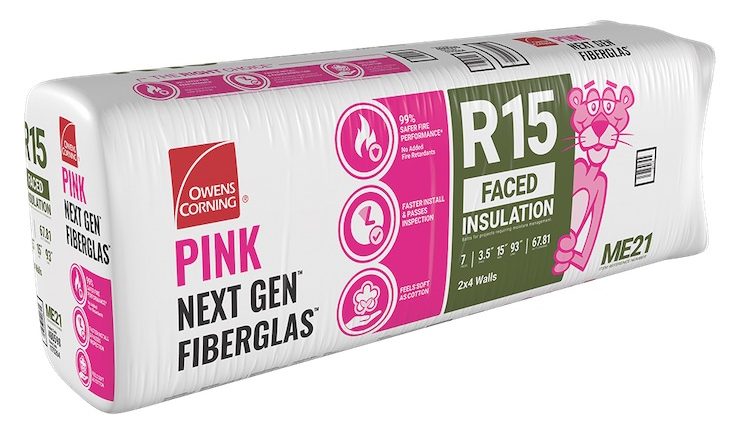
Owen Corning invented fiberglass and later the ubiquitous pink insulation. The improvements with PINK Next Gen include finer glass fiber that will not cut or itch installers. The material cuts easily and responds like a Memory Foam mattress, regaining its fluffy form after being squished. The material is GREENGUARD certified for low VOCs, and the R-15 batts fit into a 3-1/2-in. wall cavity. McNamee says the company could stuff more R-value into a 2×4 wall and may eventually provide a product that economically yields the R-value of a standard 2×6 assembly in a 3-1/2-in.-deep void. Lastly, McNamee told me PINK Next Gen is fabricated in plants running on 100% wind-generated electrical energy and contains the highest recycled content in the industry.
PINK Next Gen fiberglass batts range from R-11 to R-49 and in thicknesses from 3-1/2 in. to 14 in.
HempWool insulation
All kinds of cool ingredients can go into insulation, from recycled newspaper to shredded blue jeans. But nothing is cooler today than insulation made with hemp. Hempitecture has sold over one million square feet of its HempWool, which is similar in density and appearance to mineral wool. The material cuts easily with a grinder and steel cutter and fits tightly into voids.

Tommy Gibbons, a co-founder of Hempitecture, claims HempWool is the only thermal insulation product with a “biogenic carbon uptake” that maintains the efficiency of a thermal envelope. In this case, what makes the material “green” is not just its performance. Some carbon-intensive insulation materials justify their use through energy savings. HempWool does not need to offset its carbon footprint on the back of a home’s reduced energy consumption. The product is made with hemp fiber grown sustainably in rural communities across the United States. The company reports that their growing operation offsets 9.8 tons of CO2 per acre, which makes the insulation carbon negative.
HempWool batts range from R-7 at $1.10 per sq. ft. to R-28 at $2.50 per sq. ft. You can purchase directly from the factory.
Of course, I asked, “What happens if I smoke it?” A little tired of the joke, Gibbons replied, “You can’t. It’s nonflammable.”
________________________________________________________________________
Fernando Pagés Ruiz is a builder and an ICC-certified residential building inspector active in code development.
Weekly Newsletter
Get building science and energy efficiency advice, plus special offers, in your inbox.





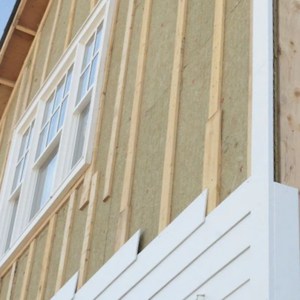
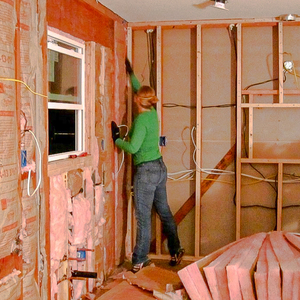
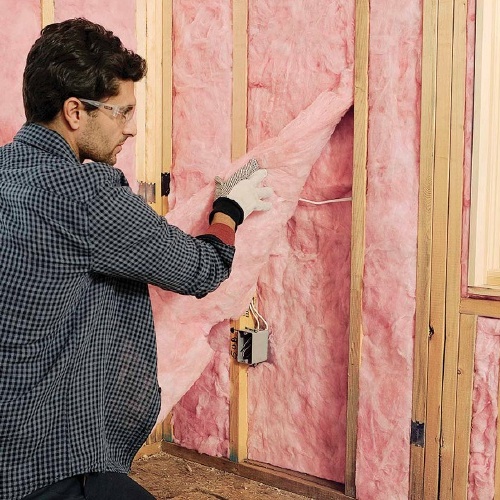
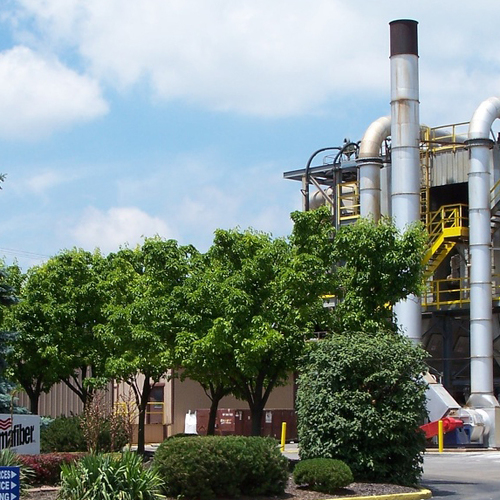






12 Comments
I was curious what they put in the hemp insulation to make it impossible to smoke and nonflammable, so I poked around the web site. Their testing data says it has a flame spread index of 315 and a smoke developed index of 350. Although that smoke index is below 420, and might not be very satisfying for recreational smoking, and is also below the 450 limit in the IBC for typical insulation applications, the flame spread index is way above the typical 25 limit for insulation. I'm not sure how that's allowed, and I think it would be worth some more questions to the manufacturer before using it. Certainly, reducing that data to "nonflammable" is not accurate.
Looks like the PINK Next Gen has unfaced batts available, and high-perf fiberglass R values, so it sounds pretty similar to Thermafiber mineral wool for R value and installation benefits (Thermafiber is lower density, less "springy" than Rockwool).
Mineral wool batts are soooo nice to install, so I wonder if this will be a value-priced alternative that installs the same way. Interesting.
Another comparison point vs. mineral wool would be the CO2 emissions in manufacturing. The 100% wind power statement sounds great, but looking at p. 148 of their impressively comprehensive sustainability report (https://www.owenscorning.com/en-us/corporate/sustainability/docs/2021/2020-Owens-Corning-Sustainability-Report.pdf) I estimate that 70% of their energy use (across different products) is "direct" meaning primarily burning fossil fuels on site and only 30% is in the indirect category that includes electricity. So the windpower helps, but leaves the pink elephant in the room unaddressed. It may actually be significantly better than rockwool in that regard but I don't see any data to help us figure that out.
I haven't bought insulation in a while. How does the cost for hemp compare to fiberglass or rock wool?
For those who have used it or have seen other write-ups about it, is the Pink Next Gen fiberglass insulation just marketing spin or is it actually an improved product in terms of installation and performance?
Cuts EASILY with a GRINDER??? That doesn’t sound easy compared to cutting essentially any other insulation.
Here is the full statement on Hempwool flammability from their website. Clearly this is currently a significant issue they are working to fix: Source: https://www.hempitecture.com/faq
Is HempWool® fireproof?
HempWool® has Class-E fire resistance, so although it is seen as higher on the FSI and SDI, you can protect HempWool between fire-resistant walling (both your exterior siding and interior wallboards). Due to the lack of fire resistance, it is generally approved by a case-by-case project and is not applicable for some projects.
As we transition to a new manufacturing facility, we are integrating fire-retardants into HempWool®. Expect Fire Resistant HempWool in 2022.
Hopefully they will be using something more natural like boric acid. Biggest advantage they appear to have right now is availability compared to mineral wool especially for rigid boards.
Thanks. It's really concerning that the sales person portrayed it so differently. Also a problem that GBA published the "nonflammable" claim without fact checking.
Re: Hempitecture.... I've noted the flammability issues as well, and if they need to add borates, that gives a significant red check mark against its sustainability marketing, as contrary to popular believe, Borates are highly toxic even in small doses. And the remarks about protecting from the living space using a non-flammable barrier, such as drywall, doesn't hold much water, as many fires occur from shorts within the plastic electric boxes, which ironically, instantly melt away and expose the surrounding insulation to spark and flame upon a decent short. Additionally, Hempitecture insulation cannot recycled at end of life as it's bio-matter, but it also cannot be composted as they use synthetic poly fibers as the bonding agent, which would just introduce more micro-plastics into the environment, which is already a huge problem. So, my go-to is still Rock Wool insulation.
I usually say that boron compounds are relatively safe for humans, just don't eat the insulation. You wouldn't want to eat fiberglass, mineral wool or spray foam either.
We recently installed Hempwool insulation in a client's house, and while the drywaller was using his zip cutter to cut around the electrical boxes he said he could smell smoke. We pulled one of the boards off and found some burn marks on the insulation. We just pushed the insulation in around the boxes and continued but we were all concerned and decided to do a fire test.
The next day we took out the blow torch and tested the flammability on rockwool batt, rockwool comfortboard, pink fiberglass, styrorail ridged insulation, and then hempwool. Skipping to the relevant part, the Hempwool is definitely flammable, and continued to burn long after I took the torch away. It also smoked like you would expect a grass to smoke when lit on fire. Even after hosing it down to put it out the wind picked up a few minutes later and it reignited.
So the authors question is valid and I'd like to see an answer, will breathing in hempwool smoke get you high?
More seriously though, if someone were to still want to install it in their home I would strongly insist on a Type X drywall installed over it, with fireproof caulking around the boarders and any holes or extrusions. In its current form, I can't see this product being approved for widespread use ever and they will need to add a fire-retardant to it.
Log in or create an account to post a comment.
Sign up Log in